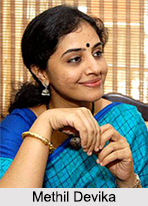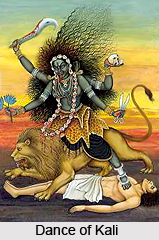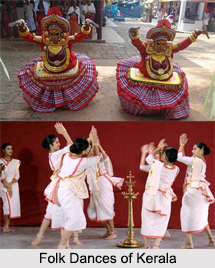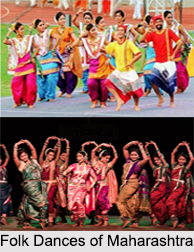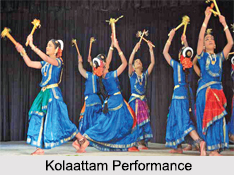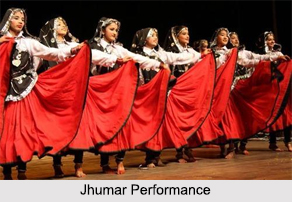 Jhumar dance is a folk dance popular in the Haryana state of India. It takes its name from an ornament named Jhumar. The ornament is generally worn by young married women to decorate their forehead. This traditional dance is specially performed by the young girls who are married. The dance is performed to the beats of the musical instruments such as dholak and thali. In some parts of the state, Jhumar dance is also popularly known as the `Hariyanvi Gidda`.
Jhumar dance is a folk dance popular in the Haryana state of India. It takes its name from an ornament named Jhumar. The ornament is generally worn by young married women to decorate their forehead. This traditional dance is specially performed by the young girls who are married. The dance is performed to the beats of the musical instruments such as dholak and thali. In some parts of the state, Jhumar dance is also popularly known as the `Hariyanvi Gidda`.
Origin of Jhumar
The folk dance of Jhumar initially originated from the Balochistan and Multan. It also thrived into the areas of Punjab in Pakistan. The word “Jhumar†is derived from “Jhoom†that means swaying. The songs associated with Jhumar performances evoke qualities that reminds the artist and audience to sway with its tunes. Although, the content of these songs vary as usually there are emotional songs too about romanticism. Jhumar is also known as the dance of ecstasy. It is usually performed in weddings and other important occasions. The folk art is an appropriate demonstration of happiness.
Performance of Jhumar Dance
Jhumar dance performers dress themselves with colourful costumes and adorn with sparkling jewelleries. They dance in happiness by singing and clapping with the beats of `dholak` and `thali`.
Jhumar dance begins with a girl singing a song. There are many variations in performing this dance, each with its own distinctive rhythm. The most unique part of Jhumar dance is in one of its variations the performers stand on the thali or steel plate and they all move very elegantly by keeping the thali in feet.
Music of Jhumar
In general, while performing Jhumar dance the dancers from a circle and make graceful movements. At the same time, they charmingly move in a circle. The performance lasts for several hours. Any girl from the group comes forward and starts singing the following song:
"Kori kori chandi ki chandri ghari,
oupar gharyanagina,
hai mana tari sohn,
Phagun ka must mahina aiya"
The above lyrics mean "My chandri is of pure silver, decked with a nagina, O mother, the intoxicating month of Phagun has arrived". After finishing the first sentence, another girl then steps forward to come inside swaying rhythmically with perfect poise and steps. The second sentence is sung by both of them. Both the dancers share lyrics and rhythm elegantly. The tempo of the dance increases as it proceeds further. The other girls do not leave their places but keep on singing the song and clap their hands or against each other. There is a short pause before a new line of the song starts. This dance is somewhat similar to the well-known Punjabi Giddha and is thus named Haryanvi Giddha. It is common in all parts of the Haryana state.
Types of Jhumar
Jhumar dance can be categorized into different types based on their performance, songs and music of the dance. These popular types of Jhumar dance are as follows:
•Satluj Jhumar
•Beas Jhumar
•Chyenab Jhumar
•Multani Jhumar
•Jhoomar Taari
